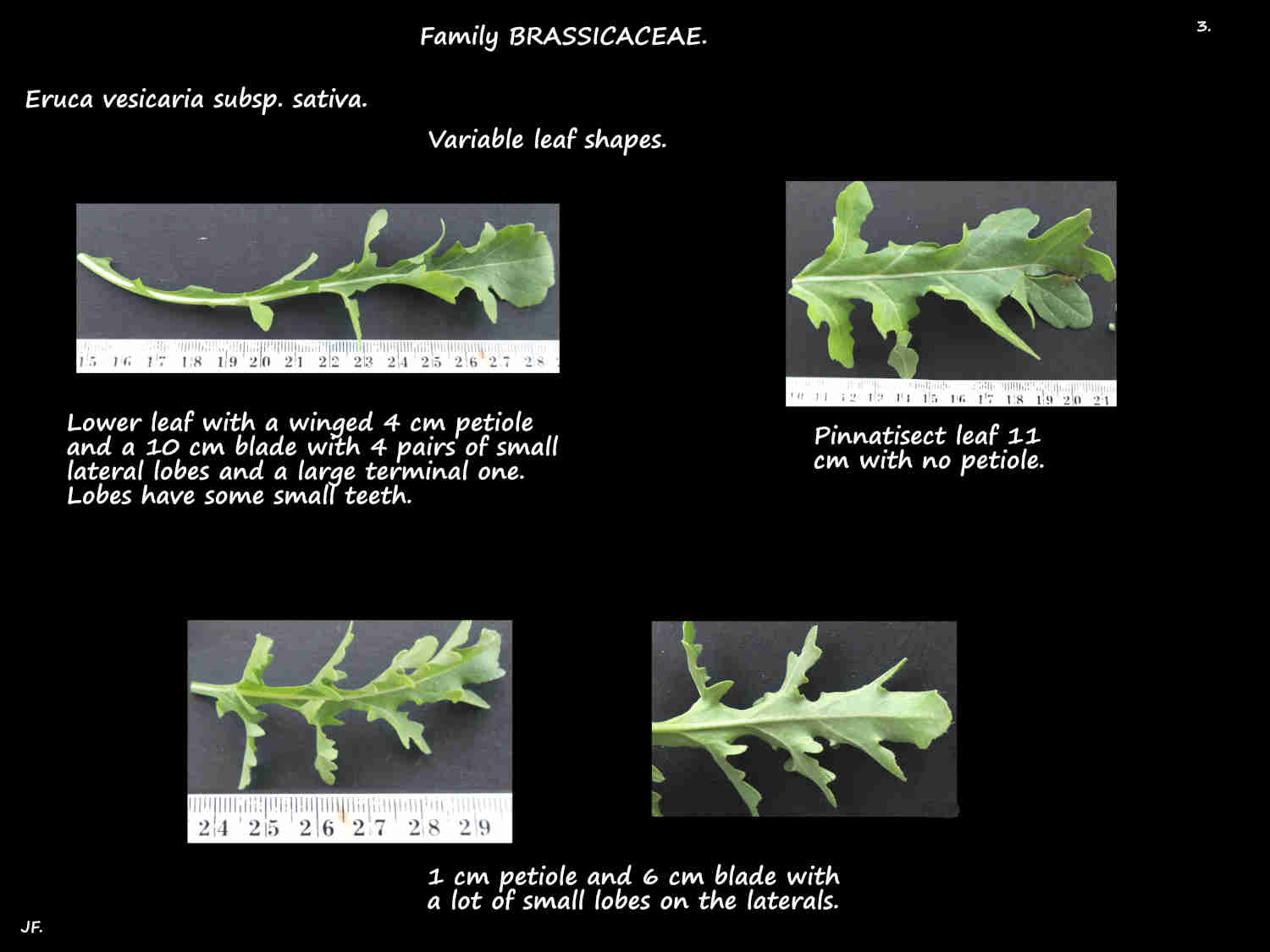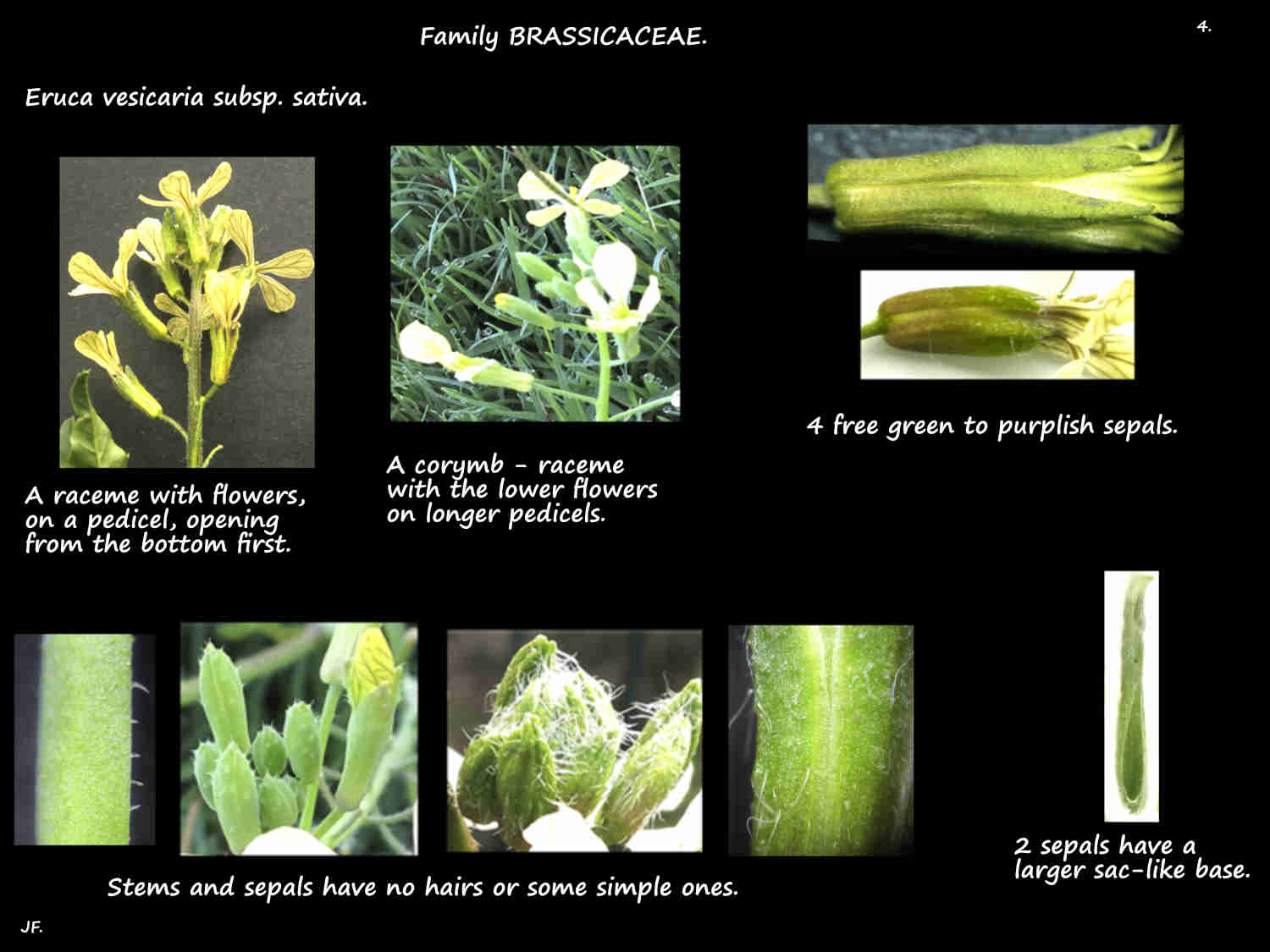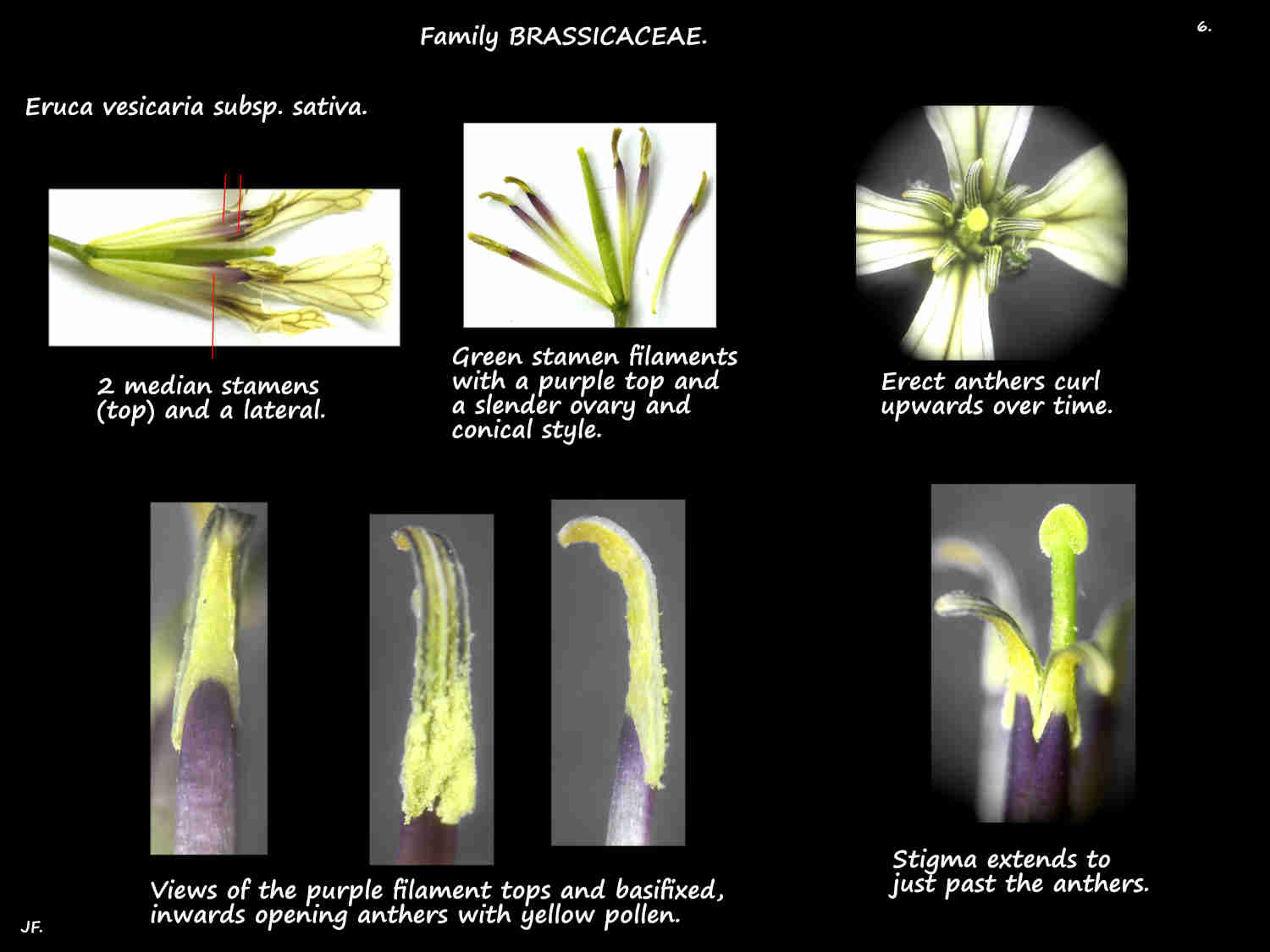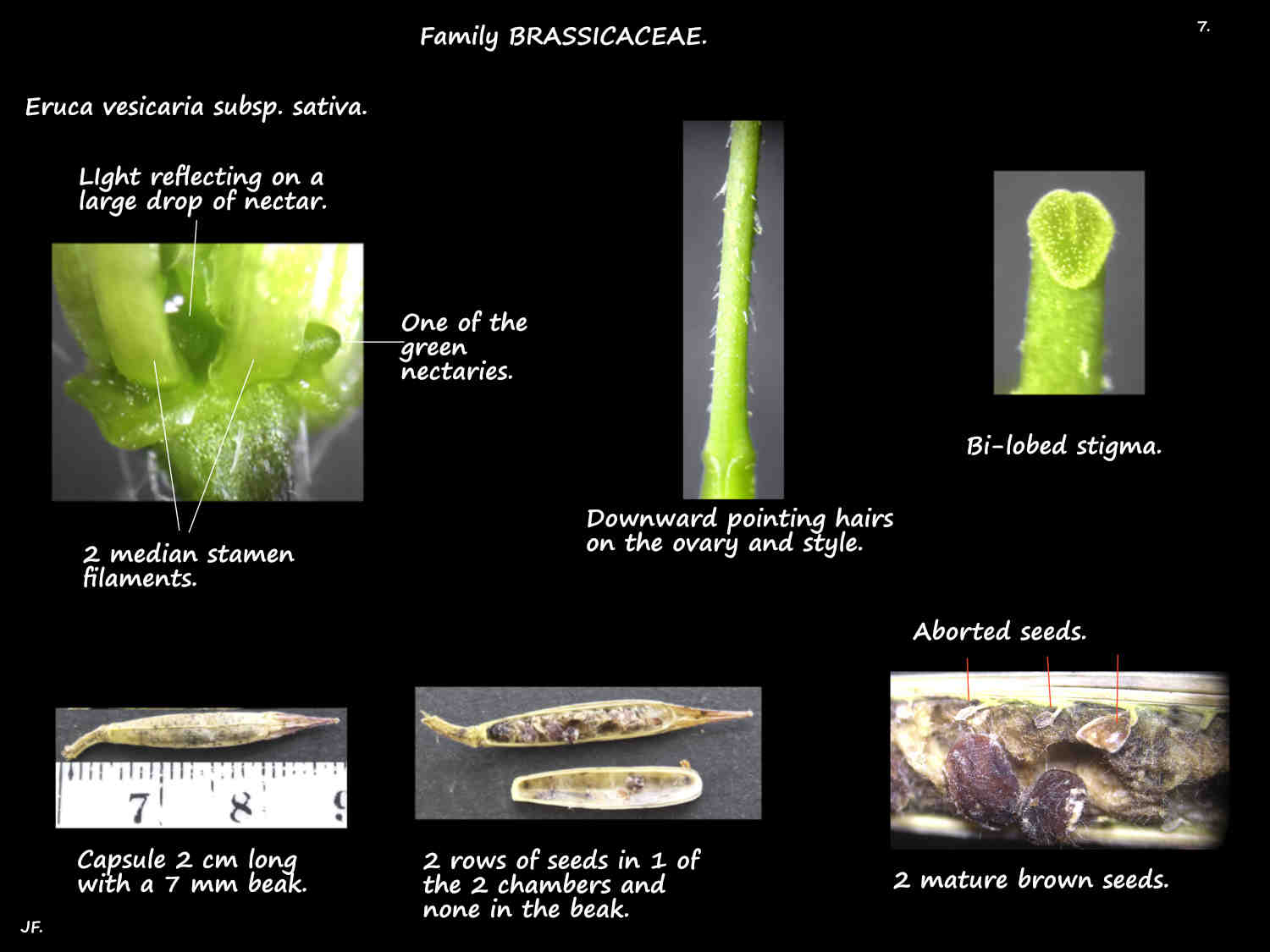Eruca vesicaria subsp. sativa.
Kew lists 47 synonyms for this plant.
From the Mediterranean area it is naturalised in Australia where it has become a weed.
Known as Purple-vein or Garden rocket it was introduced as a leafy vegetable.
The annual to perennial herbs have a thin taproot and erect or semi-erect branching stems up to 1 m high.
Stems may have no hairs or simple downward pointing ones that can be soft or short and bristly.
Leaves are spirally arranged along the stems with the lower and upper ones being different.
The lower leaves have a petiole up to 5 cm long and a blade up to around 15 cm long and 4 cm wide.
Occasionally entire or toothed they are usually deeply divided with 2 to 5 pairs of small lateral lobes and a single larger terminal one (lyrate).
The dissections usually extend to the midrib (pinnatifid) but sometimes only half way (pinnatisect).
The oblong to ovate lobes may occasionally be further divided or have a toothed edge.
Lower leaves are often lost on older plants.
Along the stem the leaves are on progressively shorter petioles and the upper ones have none.
The blades may be entire (undivided) or lobed.
The erect or semi-erect terminal inflorescences are a raceme with flowers, on a pedicel, along a midrib with
the lower ones opening first so the midrib continues to lengthen.
The flowers are sometimes level with lower ones having longer pedicels than the upper (a corymb).
The 2 to 5 mm pedicels lengthen to around 10 mm as the fruit develops.
When fully open the flowers are up to 4 cm across.
There are 4 oblong green to purplish sepals up to around 1 cm long.
Two of them have a sac-like base.
They may have a few or no hairs and they are typically deciduous.
The 4 petals, alternating with the sepals are up to 2.5 cm long and 1 cm wide.
They are spoon-shaped with a long narrow claw base and a shorter rounded tip.
Deep yellow in the bud they are yellow when fully open then fade to white.
The veins are purple or brownish.
There are 6 stamens with the 2 median pairs up to around 14 mm long and the lateral 2 up to 11 mm.
There are 2 or 4 nectaries at the base of the stamen filaments.
The superior ovary has 1 locule divided by a false septum into 2 chambers each with up to 50 ovules in 2 rows.
The stigma has 2 lobes.
The fruit are a septifragal capsule with 2 rows of seeds in each of the 2 chambers.
Up to around 3 cm long they are oblong with an apical beak up to 1 cm long.
The surface can be smooth or have some hairs.
The brownish roughly spherical seeds have a textured surface.
J.F.









